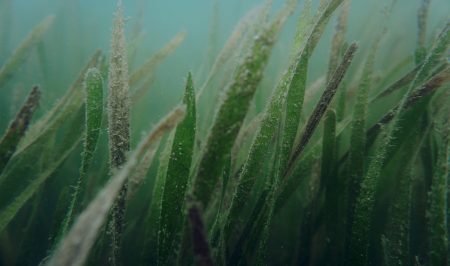The greenhouse gas offset potential from seagrass restoration
Oreska et al. 2020 Seagrass meadows are highly productive systems that bury organic carbon in sediment. This study is the first to quantify net greenhouse gas removal from the atmosphere from seagrass restoration. The authors measured all the necessary greenhouse gas parameters in the 7km2 of restored eelgrass meadow in Virginia, USA, finding that the […] November 30, 2020
Oreska et al. 2020
Seagrass meadows are highly productive systems that bury organic carbon in sediment. This study is the first to quantify net greenhouse gas removal from the atmosphere from seagrass restoration. The authors measured all the necessary greenhouse gas parameters in the 7km2 of restored eelgrass meadow in Virginia, USA, finding that the restoration sequestered 9600 tCO2 over 15 years, but also increased both methane and nitrous oxide release, equating to 950 tCO2e. Taken together, this meant restoration offset 0.42 tC/ha/yr. This roughly agrees with the IPCC’s estimate of 0.43tC/ha/yr, but is lower than some previous estimates, which didn’t account for background carbon sequestration that would occur in the absence of seagrass. This is lower than average rates for temperate and tropical forests are 2.6 and 5.3tC/ha/yr respectively, however, the authors note that carbon sequestration rates are known to vary significantly between sites, so rates need to be comprehensively assessed at more seagrass restoration sites.
At a price of $10/tonne, offset credits would finance only about 10% of the $800,000 cost of restoring the site in Virginia; a carbon price of $95/tonne would, however, be sufficient. Without a higher carbon price, other methods are needed therefore to finance seagrass restoration; these should take into account the other benefits of seagrass meadows, such as fisheries support, nutrient removal and protection of other coastal ecosystems (such as saltmarshes) from erosion.
Read the paper here.
